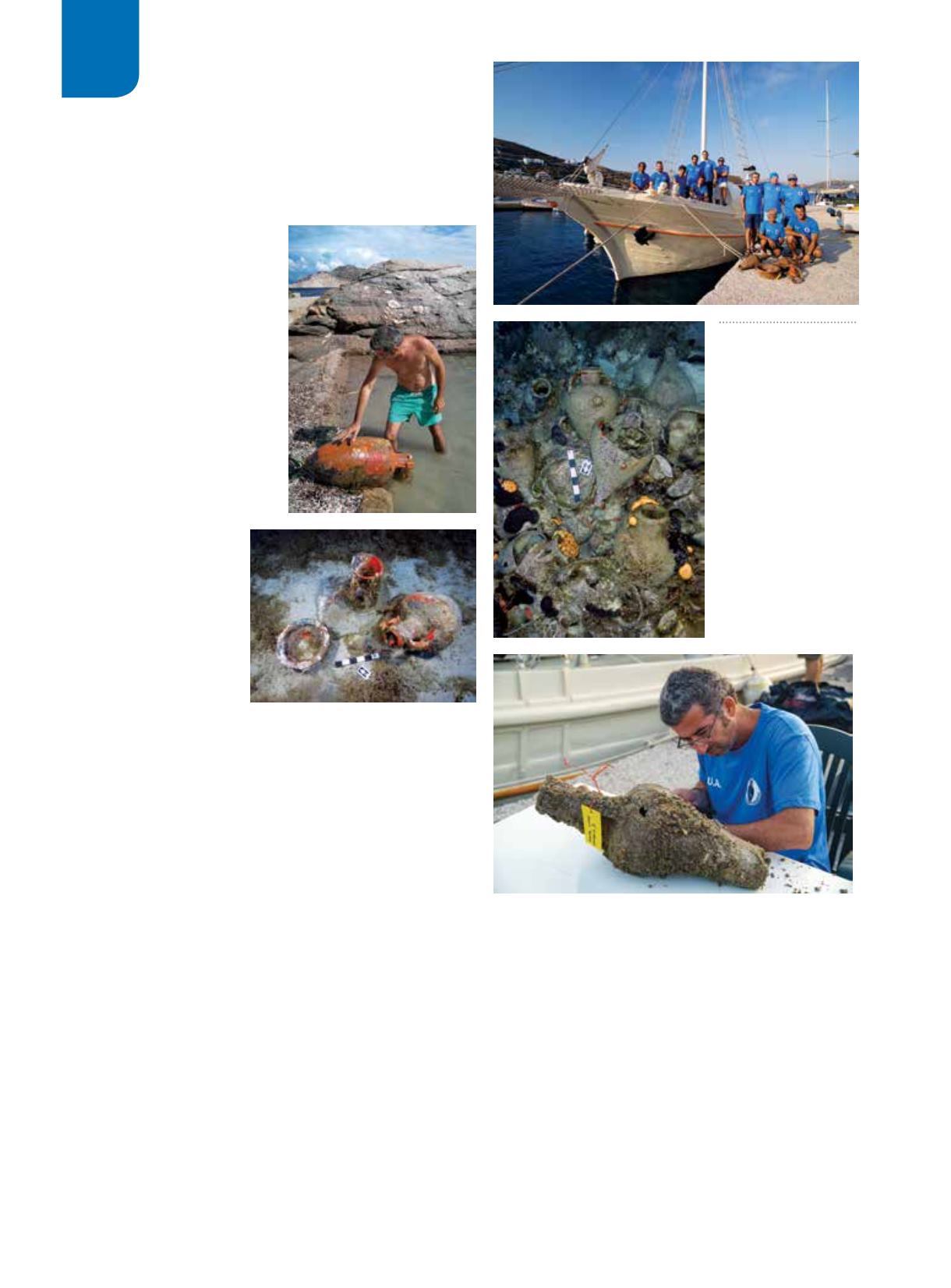

20
|
WINTER 2016
DIVE SLATE
ANCIENT SHIPWRECKS
Two years earlier I had the honor of diving with
Koutsouflakis on a newly discovered ancient Roman
shipwreck that he had found off the southeast coast
of Greece. That single dive with him turned out to
be one of the highlights
of my diving career, and
it sparked in me great
enthusiasm for ancient
shipwreck diving. I
have been diving on
underwater wrecks for
many years, mostly in
the North Atlantic, but
this was something quite
different for me.
As we descended
through the water column,
a spectacular debris field
came into view. This was
a deep wreck, so
the ancient artifacts
were intact, adding
to my excitement.
Koutsouflakis and
I surveyed the
footprint of this
Roman shipwreck
and its contents, and
I could not help but think of the long-lost history of this
find and how honored I was to be the first diver outside
of the Greek archeological diving community to visit this
historic treasure. After the dive Koutsouflakis told me
about the history of the wreck, its trade route and cargo.
“This Roman wreck is loaded with a main cargo of
Lamboglia 2 amphorae, which are wine containers made
on the Italian peninsula,” he said, “with a secondary
cargo of wine amphorae originally from the island of
Rhodes. Rhodes was famous for its wine and was one of
Rome’s biggest suppliers. So 90 percent of the cargo on
this wreck was wine, and it originated from Italy. The
wreck is dated between 130 and 80 BCE.”
What we could not see intrigued me the most. We
were looking at the top deck of the ancient ship, and
there were two more decks below the visible debris
field that were covered by sand. An enormous trove of
artifacts lay beneath just waiting to be viewed.
Three days later I was invited to join a team of
Greek underwater archaeologists that was working
on an ongoing underwater site just off the island of
Poros. Christos Agouridis, a friend and colleague
of Koutsouflakis, invited me to dive with his team
at Koutsouflakis’ behest. This site was an ancient
Mycenaean shipwreck dated to 1200 BCE. I spent the
night in base camp with the team and in the morning
headed to the wreck site aboard their support vessel.
They were in the process of 3-D mapping the wreck,
uncovering its artifacts and documenting their finds.
The team, made up of both male and female Greek
divers, had training in underwater photography,
archeology and architectural design, and several
seasoned commercial divers filled out the ranks. I
was amazed by the team’s experience and impressed
with the passion they showed for their work. The
experience also made me aware of the enormous
challenges these kinds of underwater operations face.
Fast forward to today, Sept. 10, 2015 — I am excited
to be joining the team again. This next underwater
Clockwise from above:
The 2015 Fourni
Underwater Survey
team; amphorae dating
to the Archaic Period
(800-400 BCE) lay
scattered among the
oldest shipwreck the
team found; the team’s
conservator painstakingly
cleans marine growth
from an encrusted
amphora; an amphora
and funerary table found
among a Hellenistic
Period (323-31 BCE)
shipwreck; the team’s
conservator inspects a
recovered amphora
















